How TOT monitoring helps remediation of 'Dirty Dozen' and POP's
Stockholm Convention: Persistent Organic Pollutants (POPs) - Polychlorinated Biphenyls (PCBs) and Furans
The Stockholm Convention came into force in 2004 to regulate the use of PCBs and Furans in transformer oils.
PCBs excellent electrical properties, inertness and non-flammability made them important for use in insulating fluids in transformers. Furans are created by the degradation of electrical insulation paper within transformers. Both can cause serious health problems and are classified as Persistent Organic Pollutants (POPS)
This paper aims to outline:
• PCBs and Furans and their importance to transformers
• The Stockholm Convention, POPs, The Dirty Dozen and your obligations
• Transformer Oil Condition Monitoring as an effective means of identification and quantification of POPs
What are PCBs and Furans?
The core and the windings in a transformer are completely immersed in transformer oil. This oil has three main purposes;
• As an insulating medium to support and separate electrical conductors without allowing current through themselves
• to dissipate any heat and
• to prevent / minimise the oxidation of insulating paper that resides in the transformer.
PCB’s (polychlorinated biphenyls) are a group of man-made synthetic hydrocarbons derived from biphenyl (C12H10).
There are 209 different combinations (congeners) of PCB’s with up to 10 Chlorine atoms replacing the Hydrogen atoms. These mixtures have good thermal stability and electrical characteristics, are resistant to acids and alkalis and soluble in organic solvents and so enhance the basic properties of transformer oils. The different levels of chlorination are described by the term homolog. Monsanto Corporation marketed mixtures of PCBs under the trade name Aroclor and further identified by a four-figure code, first two numbers show the type of mixture and the last two the approximate Chlorine content by weight, e.g. Aroclor 1242 is a mixture of homologs with an average Chlorine content of 42%. Clophen, Fenclor and Phenoclor are trade numbers of commercial PCB mixtures manufactured around Europe. Studies on CBs in humans have found increased rates of a range of cancers.

A transformer requires Insulating material that can withstand extreme stresses at the transformer core and windings. Paper has been in use for many years and the newer products are made with high grade cellulose. Pure cellulose is polar, a good insulator and has very good electrical properties. The long chain of molecules of the Cellulose structure break down because of aging due to water and temperature.
Furan is a heterocyclic organic compound, consisting of a five-membered aromatic ring with four carbon atoms and one oxygen.
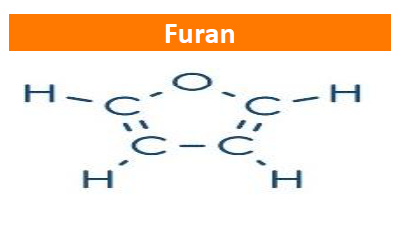
Furans commonly refers to polychlorinated dibenzofurans (PCDFs) and are derived unintentionally as a consequence of the degradation of electrical insulation paper. Long term exposure in humans to Furans are linked to problems associated with the immune and nervous systems. The following furans are tested as part of the VPS Transoil transformer oil conditioning monitoring program. (see table 1 also).
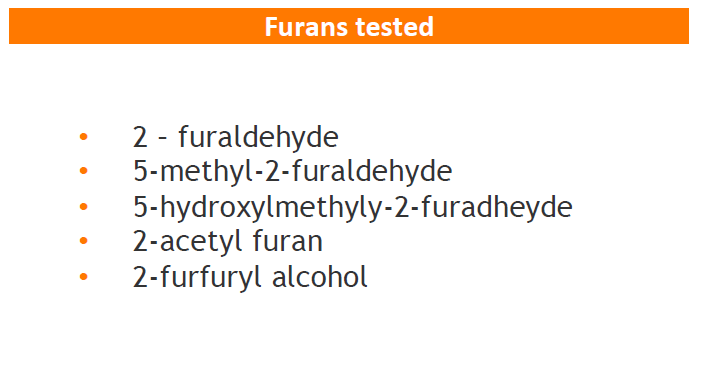
What is the Stockholm Convention, POPs and the “Dirty Dozen”?
The Stockholm Convention (http://chm.pops.int/) was signed in 2001 and is a legally binding international instrument designed to help the decrease of persistent organic pollutants (POPs) in the environment. One hundred and fifty-two countries are signatories to the Convention. It entered into force and was adopted into EU legislation on 17 May 2004. Initially 12 POPs were recognised, the so called “Dirty Dozen” and divided into 3 distinct categories; pesticides, industrial chemicals and by-products. PCBs were classed as industrial chemicals and Furans as by-products.
The convention requires countries to implement measures to eliminate the production and use of POPs and manage their disposal by environmentally acceptable means. For PCBs, the Convention prohibits any new PCB production and the phasing out of electrical equipment that contains high concentrations of PCBs by 2025.
The United Kingdom Government issued a national implementation plan in February 2017 stating that although total emissions from PCBs has declined over the last 20 years “the main source of UK PCB emissions arising from di-electric equipment is still cause for concern” and that “the Government is seeking further ways in how it can address emissions from dielectric equipment that contain PCBs.”
Transformer Oil Condition Monitoring and Identification and Quantification of Transformer Oil POPs
As we know, modern society is dependent on electricity and so the reliability of electrical supply is important both for industrial and domestic users. Preventative and predictive maintenance through transformer oil condition monitoring plays a key role in ensuring a high level of reliability. Chart 1 shows the consequence of failure to act with the condition of the asset alongside the cost of failure. For transformers this can be from $50,000 for repairs and up to $3 million for a catastrophic failure.
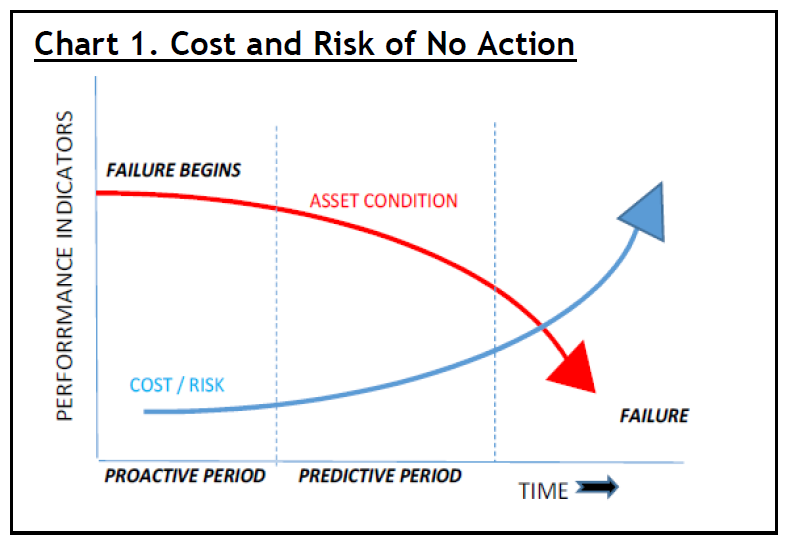
As stated previously, the role of transformer oil is to provide electrical insulation, cool the transformer and provide stability at high temperatures. Transformer oil deteriorates with time due to electrical and thermal stress, moisture ingress and chemical contamination.
Sophisticated laboratory testing of the transformer oil provides information on the longevity of the oil as well the condition of the transformer. This, in turn, substantially increases the lifetime of a transformer, while delaying new investment and minimising replacement of expensive transformer assets. Included in this health check are POPs from the Stockholm convention. Each of these tests have a relevance to the condition of the oil and the transformer itself (table 1).
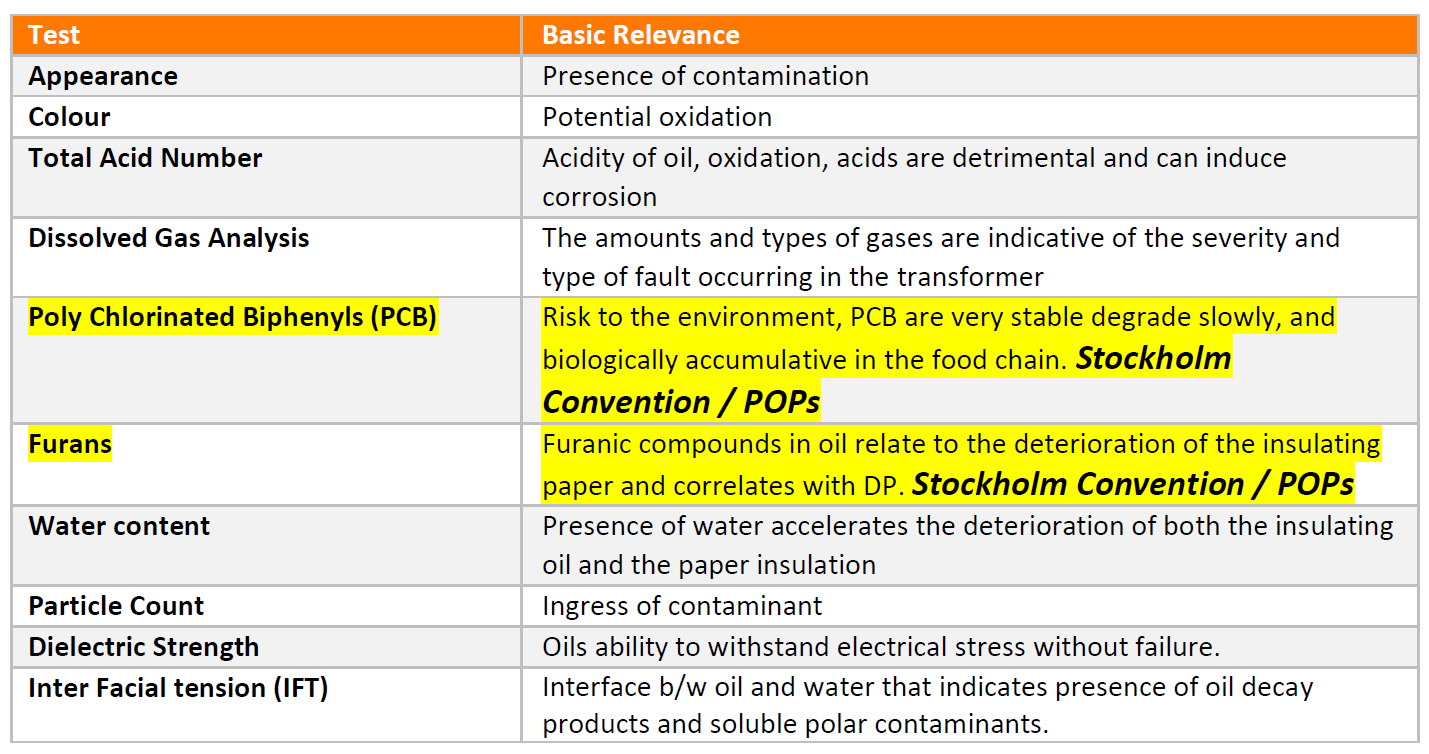
The VPS Transoil transformer oil condition monitoring service is summarized below:
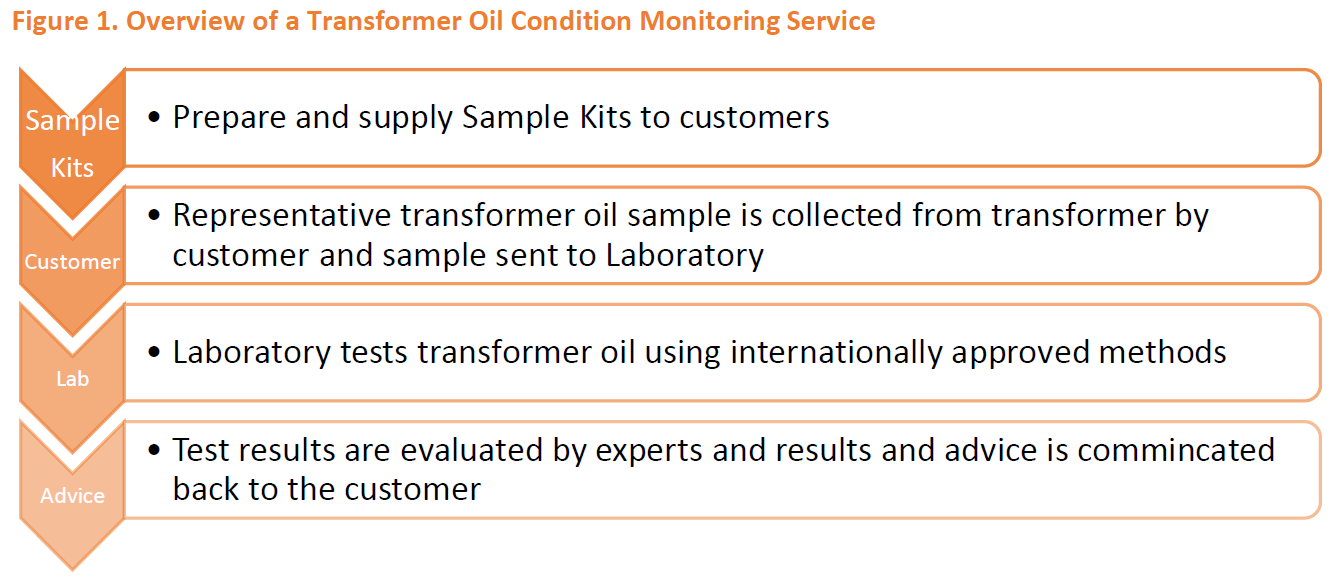
Sample kits are prepared that are specific to the type of testing required and are used to obtain a representative sample of the specific type of oil in the field. The oil sample is then returned to the laboratory for testing.
A range of tests are performed tailored to customer and site requirements (see above). For the Stockholm convention the following two tests highlighted along with their method of testing are;
• IEC 61619: The International Standard used for the laboratory analysis of polychlorinated biphenyl (PCB) concentrations by high-resolution capillary column gas chromatography using an electron capture detector (ECD).
• IEC 61198: The International Standard for the laboratory analysis of 2-furfural and related furan compounds resulting from the degradation of cellulosic insulation and found in mineral insulating oil samples taken from electrical equipment.
At the final stage of the process, the test results generated from the laboratory are evaluated by experts to provide appropriate advice. Essentially, the outcome is to provide an assessment of the quality of the oil and asset condition in order that advice may be given to the client on the necessary course of action. The detection of PCBs or Furans and their quantification will help with compliance with the requirements of the Convention.
In conclusion, we should recognise the importance and value of transformer oil condition monitoring. We should balance its relatively small cost against the impact on our health and the environment as well as the enormous saving on replacement, repair or downtime of a transformer. The Hartford Steam Boiler Company have identified significant savings from $50,000 for repair costs to $3 million when a plant is not able to export electricity.
VPS Transoil has the very latest analytical technology, automation and robotics for the testing of transformer oil and has an important role in helping compliance with the Stockholm convention and preventive maintenance programs.
 Search
Search
 Customer
Customer